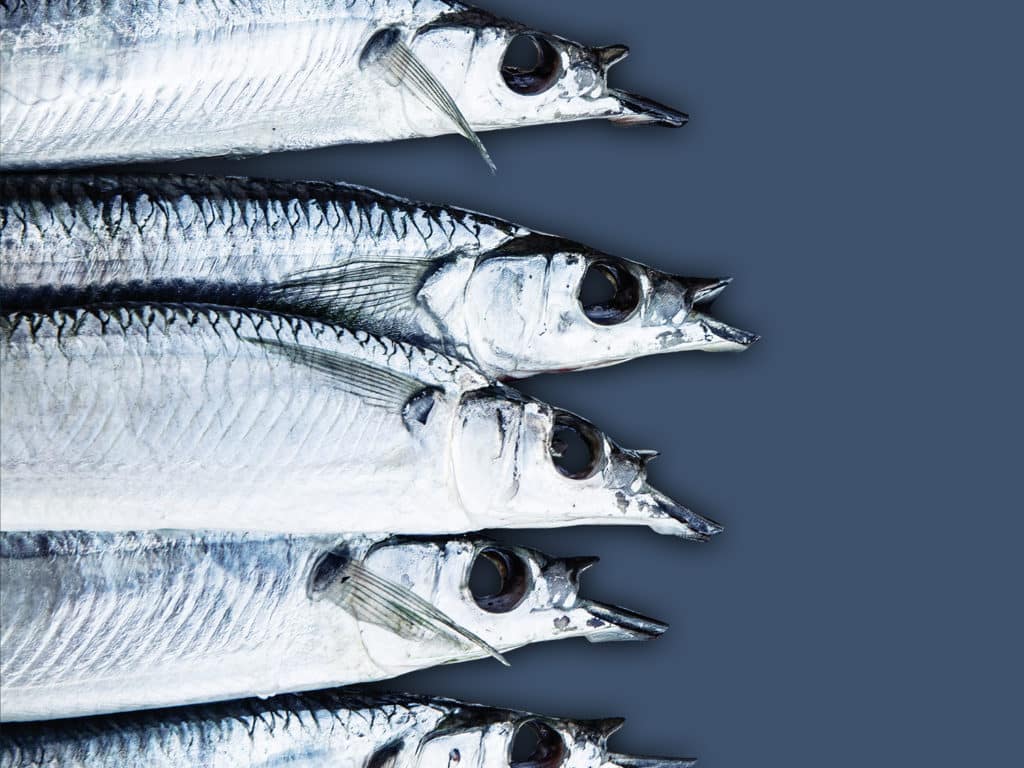
Traveling on the quest of an epic bite is something that draws many fishermen to those far-flung locations. Fishing is already highly addictive, but add seeing and experiencing something new on every trip, and that addiction only gets stronger. Whether you want to sharpen your skills, fish a tournament or simply just want to enjoy a new fishery with different scenery, traveling to new destinations is sure to create some of your life’s best memories.
Being able to catch fish abroad in new and remote locations requires you to get creative and figure out how to keep fish biting by doing things that you might not normally do at home. If you are on a budget, keeping an open mind is equally important.
The fact that you are in foreign waters, many times with only limited supplies and especially bait, forces you to think outside the box. Personally, this is something I love about fishing. By thinking creatively, and reacting to what the water and the fish are showing me that day, I can make the necessary adjustments to keep the bites happening.
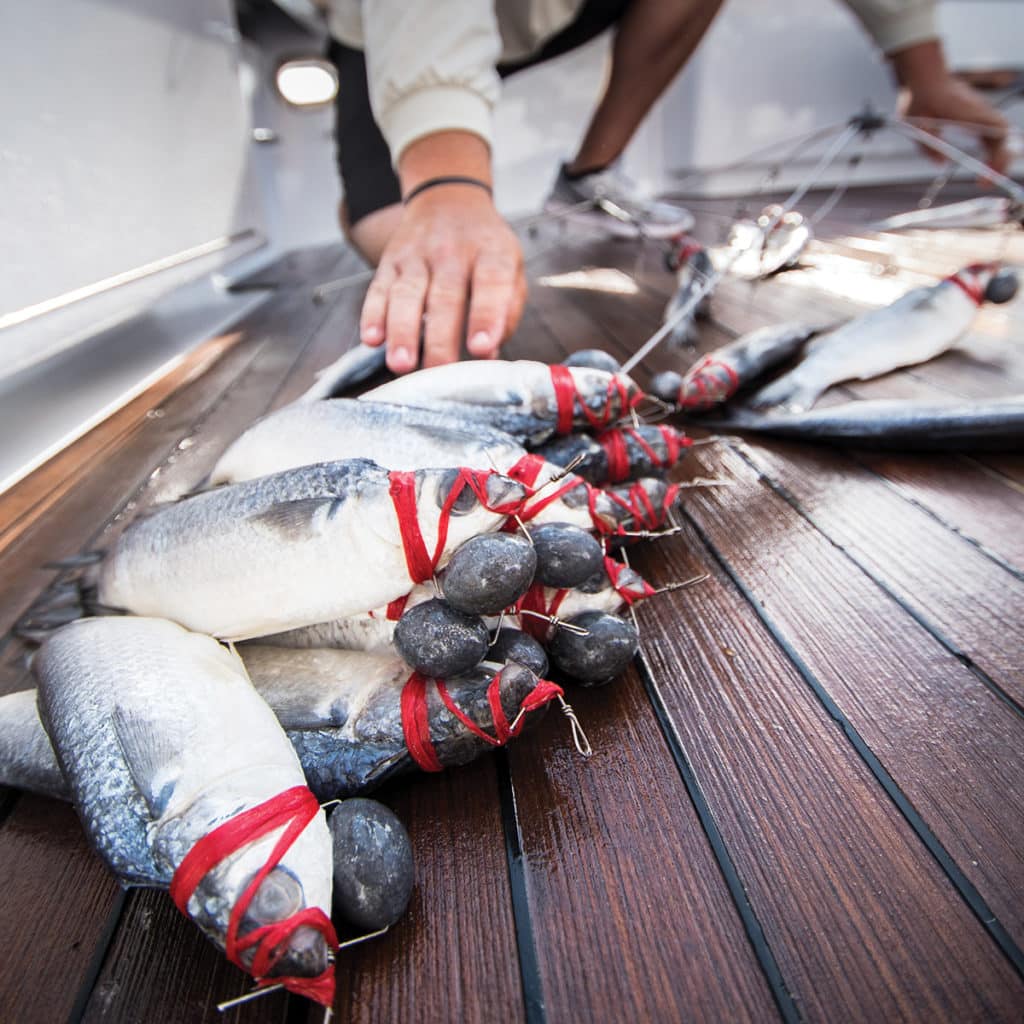
Every day, I try to experiment with something whenever the opportunity arises, and I have come across some wild things in my travels that had me thinking, That is never going to get bit, only to be pleasantly surprised and learn something new.
One time fishing in Aruba, the mate pulled out a long, lead hand line from a bucket and rigged it with a J-hooked ballyhoo backward, wrapping it up like a mummy with floss to attach it to the end of the line. He then proceeded to tie the hand line to the cleat with a bicycle inner tube that would stretch out and absorb the shock of a bite. Wouldn’t you know, it was the only thing that caught fish all day: three wahoo and a mahi.
Another crazy one was well over a decade ago in Costa Rica. The local mate rigged up this awful-looking large orange feather. I couldn’t tell if it had sat in a box of rusty hooks for months on end or if it was naturally that color, but he stitched some kind of small jack that was probably caught at the dock two or three days before that was as stiff as a log behind that feather. I remember thinking to myself, I hope he is just doing that for a quick experiment and not planning to pull it all day. In the water, it was skipping all over the place. And sure enough, it ended up being our best sailfish teaser that day. That odd-looking bait held up for multiple bites until a nice mahi made easy work of it and ripped it apart. Case in point: That was all the mate had to work with, and he made it happen.
Watch: Learn to rig a swimming Spanish mackerel here.
The Charter Customer
I have been lucky enough to not only travel and fish as hired crew, but also as a charter customer or ride-along on another charter boat while I am in different locations. It helps to see both sides of the spectrum, and I like to think it has helped me get an even better idea of what people expect when they step onto my boat.
If you are traveling abroad to charter a boat to get your fishing-travel fix, my best advice is to do your homework. Be sure to hire a reputable charter boat in the area, and don’t be afraid to ask the operator questions or voice any concerns. Be sure to ask them what a typical day is like and how they plan to fish during your charter to avoid being disappointed. Remember, it’s likely you will end up seeing plenty of methods you aren’t accustomed to, and like me, will probably think to yourself, There is no way that will ever get bit; hopefully you will be pleasantly surprised also.
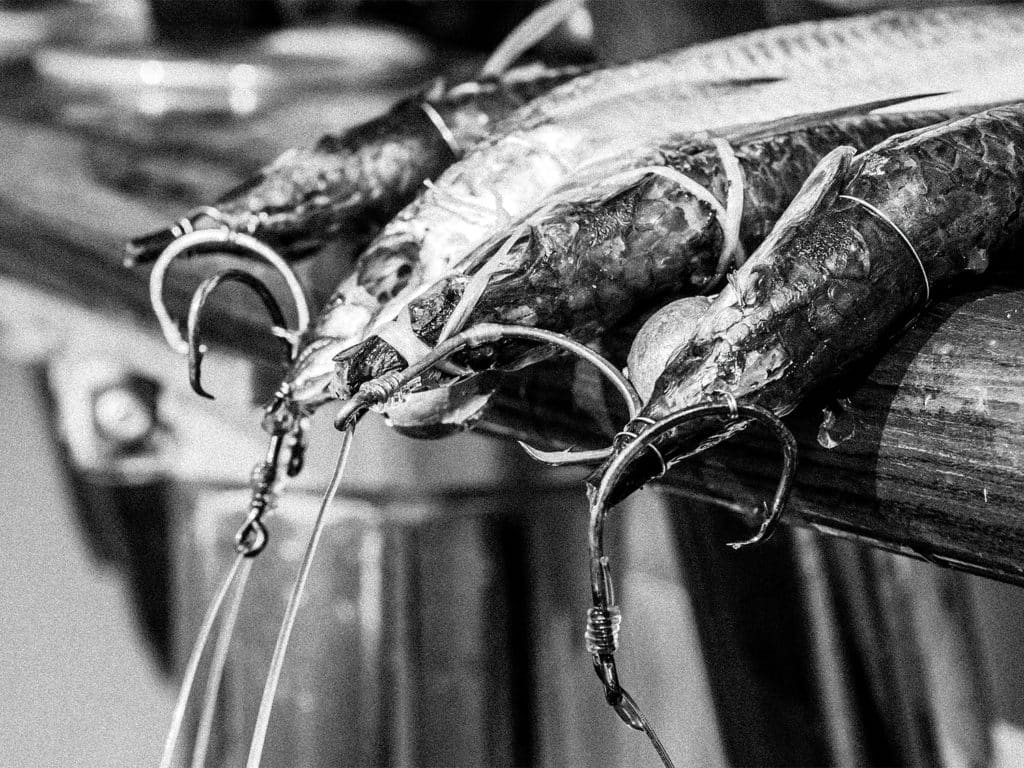
Depending on the type of fishing you plan to do, bringing the gear that you are comfortable fishing with, especially if you are drop-back fishing for billfish, is not a bad idea. Maybe you want help setting up some of your new gear and would like a professional’s advice? I would recommend asking the charter operator what tackle they use, and if you would like to bring some of your own, make it known.
Nevertheless, a good boat should have the proper gear and bait, so don’t bring something just to show them you use the right stuff. You might get some funny comments or a simple “that looks nice, but it isn’t getting used today” kind of vibe from the crew. The whole point of this trip is for you to have fun and be confident, and the charter operator should understand that.
And depending on the location, it wouldn’t hurt to ask if you can bring bait if it isn’t readily available in the area. Most baits today are vacuum-sealed and so well-packed that if you keep it in a cooler bag, or wrapped up with newspaper in your luggage, it should last nearly 24 hours before it begins to thaw out.
Although you shouldn’t have to bring anything at all with you, chartering is a great alternative when traveling abroad. It’s also a great way to pick up new tips and tricks. No matter how long you have been fishing, there is always more to learn.
Need. More. Bait.
In most of today’s fisheries, it’s the bait that gets the nod. And it’s hard to beat the real thing. Skirted ballyhoo get the most tuna bites for me. Some days they do home in on plastics such as spreader bars and squid daisy chains, but when the fishing is tough, or when the big ones are biting, it’s almost always the skirted ballyhoo that gets nailed. And whether it’s dead or alive, those who have the best baits typically get the most bites.
“In most of today’s fisheries, it’s the bait that gets the nod. And it’s hard to beat the real thing.”
Spending the majority of the first part of my fishing career in New Jersey, bait was rarely an issue: We just went to our local tackle shop and got all the perfectly packaged frozen ballyhoo, mullet, Spanish mackerel and nearly anything else we could possibly need. If we knew we needed bait for the season, we made sure it was preordered. Because of this convenience, canyon fishing was all about bait: care, preparation and presentation. If it wasn’t used by the end of the fishing day, it was unrigged and tossed overboard. We had plenty.
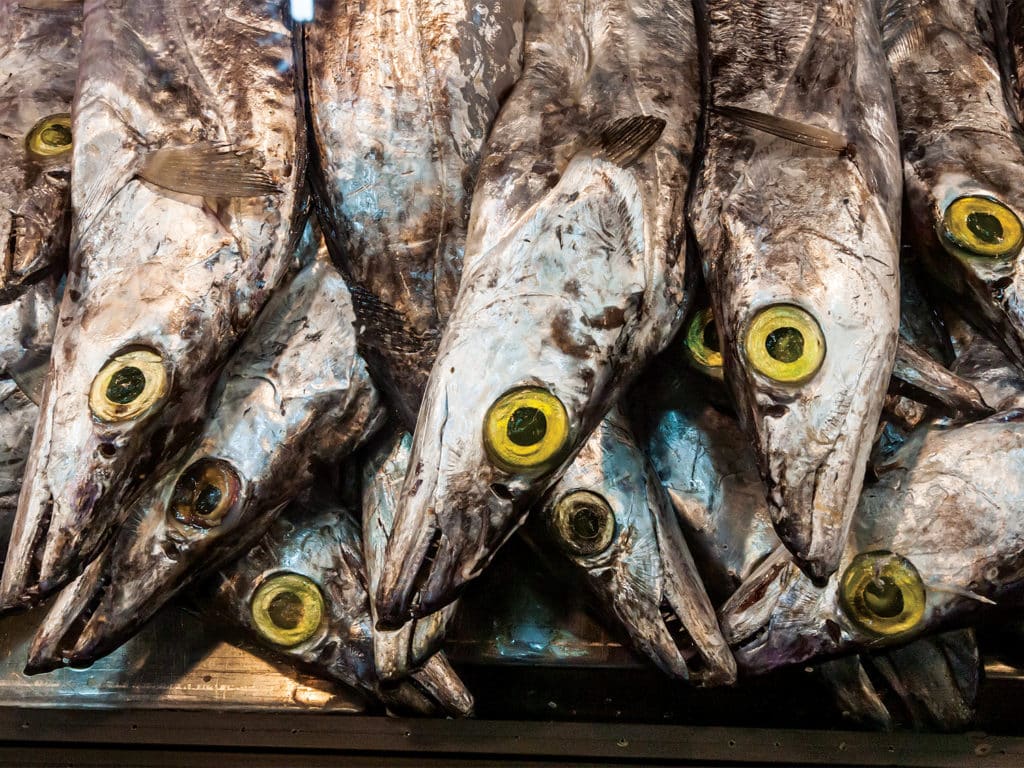
Since then, I’ve fished in some amazing locations over the past decade, and like most traveling fishing crews, we’d take freezers full of bait. We didn’t have many worries of running out as long as we managed it properly, and if we didn’t have a freezer mishap. Whenever you are fishing abroad for consecutive weeks or even months at a time, sometimes between the great problem of a hot bite and/or the issue of getting mauled by more-than-expected toothy fish, unfortunately, bait just doesn’t last as long as it’s supposed to.
“Contrary to popular belief, refreezing baits does work. My days of tossing away baits at the end of the day are long gone.”
Typically, the most important thing for me is maintaining a good supply; bait management is vital when you fish abroad. Contrary to popular belief, refreezing baits does work. My days of tossing away baits at the end of the day are long gone, especially when I fish abroad, but this works only if you care for your baits properly. From slowly thawing them to rigging them with the utmost care, you should store them correctly throughout the day so they remain at a low temperature. Only then can you refreeze your leftover baits for another day’s use. Sprinkling a mixture of salt and baking soda on your unused baits before refreezing them will go a long way in helping them last through their next appearance. And you can’t beat a good vacuum sealer for properly packing away the leftovers.
When you are fishing every day, it’s nice to have some packs of extra rigged baits (also known as hangover baits) ready to go. Even better, when you blow through your rigged baits, having those from previous trips ready to come out of the freezer and thaw quickly is crucial in keeping the rhythm and racking up the numbers.

Different Types of Bait and Artificial Substitutes
Many times, I have been so remote that the only option to get fresh bait is to catch it myself. But this is not always possible in certain locations, so consulting a local could be your best option in the hunt for what you need. While either can be more difficult than you would expect, I have found the easiest way to accomplish the mission is to work with what you are given. By this, I mean try to find baits that are similar to what you are used to using. For example, use flying fish in place of ballyhoo, and certain types of jacks in place of Spanish mackerel—and really, any bait we can get hold of to use as a big pitch for blue marlin. Even a horse-eye jack with the tail cut off will work in a pinch.
Two years ago in New Jersey, my tournament mate had come straight from Cape Verde. He insisted on a bait with a flatter profile than a Spanish mackerel for his blue marlin pitch bait. He had his reasons, and they made perfect sense to me. So, we went on the hunt for a fish in our area that best matched what he described he wanted—which turned out to be a bluefish.
On the third day of the White Marlin Open, we got the opportunity to pitch our bluefish to what was absolutely the right blue marlin. Unfortunately, we did not have a chair on the boat, and it may have cost us. Our angler did a phenomenal job, but after a four-plus-hour battle on 80-pound stand-up with heavy drag, he just could not complete the fight. We went on to release what was by far the largest blue marlin of my life. It was quite a bittersweet moment, but the point is: Thinking outside the box can work wonders when it makes sense.
Strip baits are extremely useful to us, especially when I am meat fishing on charters and don’t want to use my all-important ballyhoo, which are reserved for billfishing. Stitching up a large ribbonfish or eel tails to use with your Ilander Express works well for a teaser or as a chase bait behind your squid chain.
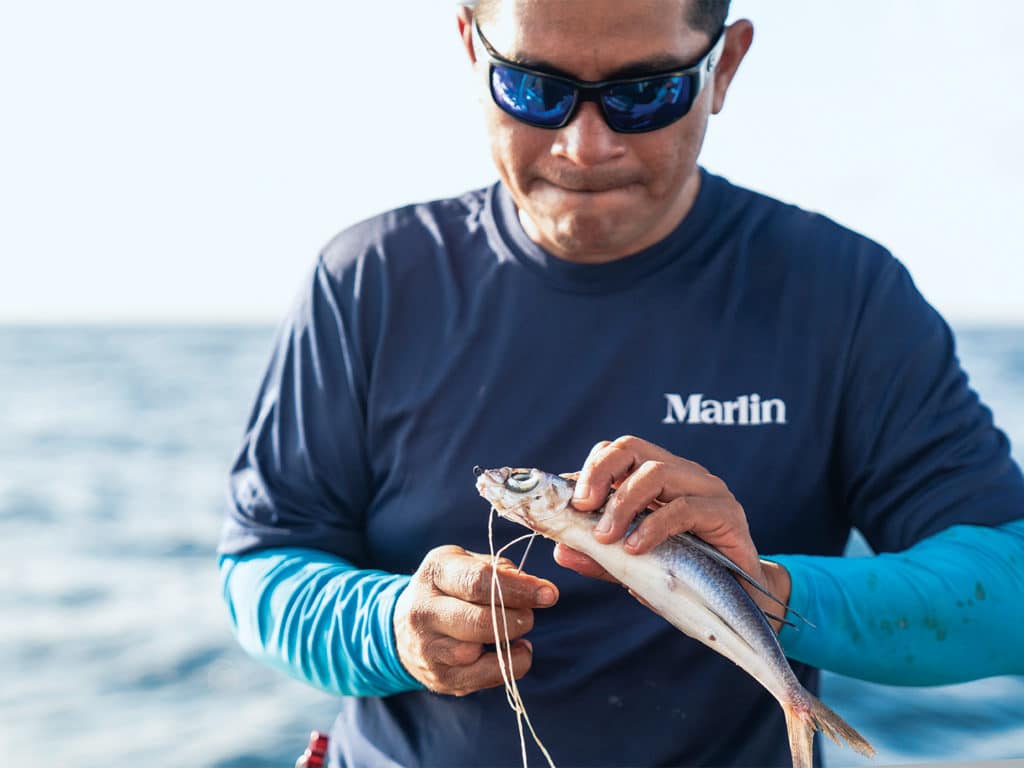
Sometimes you really must use your imagination to make it work and create bites. In some places, you might find only the smaller ballyhoo, since that might be the only size available. Small ballyhoo work really well as a sailfish or small marlin bait, but if you are in a big-bait location and have only a certain amount of it, everything other than hook baits can be artificial.
Personally, I feel naked without natural hook baits in the spread if I am fishing to get a lot of bites. Using artificial shad bodies or mud flaps—or even a favorite lure—for your chase baits instead of natural bait is even more important in this instance. Of course, there is certainly a time and a place for artificial lures like marlin plugs, but if you are looking to go for numbers, natural bait is almost always the way to go.
Fishing abroad and playing the bait game typically means prioritizing where bait is most necessary in your spread in order to keep your number of encounters as high as possible. Experiment and figure out what works best for you. Having confidence in what you are doing is one of the most important aspects of fishing, and there are plenty of sea creatures and artificials out there to try, and any one of them could probably work well for your application—or maybe even better. Experiment, and you just might surprise yourself with something new.

Whether you are traveling to fish competitively, for fun or going out on a fishing charter while on a vacation to a foreign land with your family, fishing travel is something I feel that everyone who enjoys the sport should experience. It can be captivating, and it really ends up being about more than just the fishing. The people you meet, the things you learn—fishing-related or not—and the sights you see are something you will never forget.
So, make your next fishing adventure that big-marlin trip you’ve been carrying over on your bucket list year after year. You know, the one with the fish on the teaser that’s begging you to hook her up on the big-pitch outfit. And who knows, maybe you’ll make a lifetime memory while you’re standing in the corner with your bluefish. Stranger things have happened.
Flying with Bait
Certain islands in the Caribbean do not allow you to fly commercially with boxes or coolers from the months of November through March, so the only option is to transport bait in your checked luggage. As long as your bag doesn’t get lost, packing baits that are vacuum-sealed and packed tightly will hold up until you can get them to a freezer.
It’s important that your bait is packaged well and clearly states “not for human consumption” or something similar on the label so it is not mistaken for food. Customs officials may take the bait from you if they believe it to be food. And as we have all found, sometimes it just depends on the customs officer’s mood that day.
Always check the individual airline’s rules and regulations for your destination and when you plan to fly; restrictions vary from year to year.







